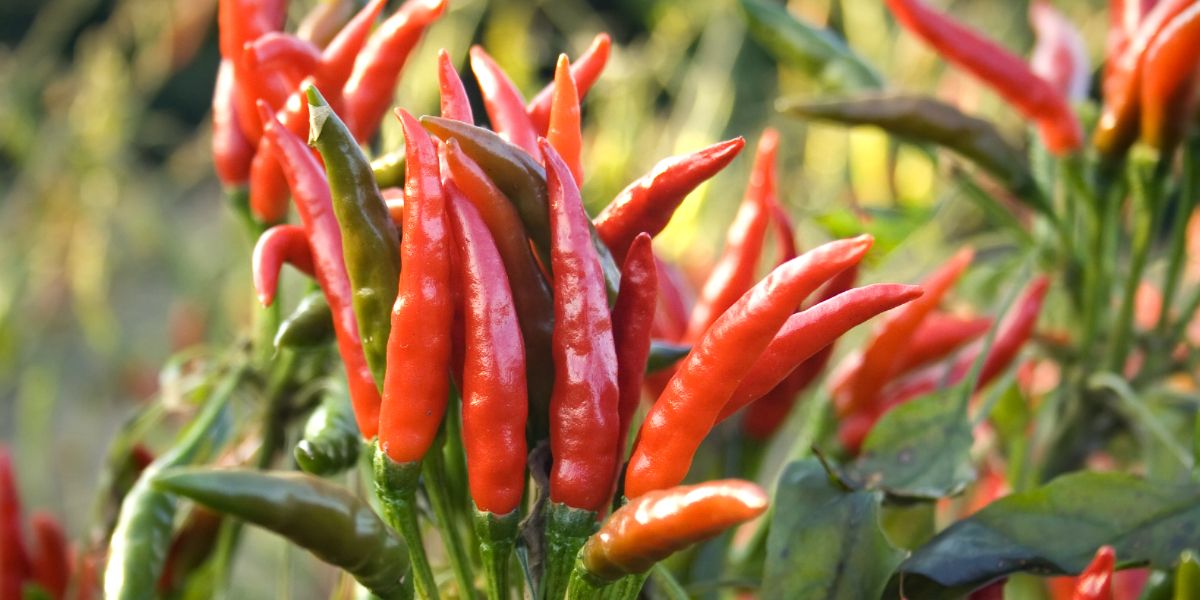What Is The Lifespan Of A Chili Plant?

As I sit here, observing my indoor chili garden with a nice cup of tea, I ponder the question that so often arises from chili pepper enthusiasts: "What is the lifespan of a chili plant?" It is a curious question, and the answer is not as straightforward as one might think.
Are you a chili pepper lover who wants to learn how to grow chili pepper plants at home? Look no further! Click below to find out which must-have books will guide you through the process of growing your own chili peppers...
There are several species of domesticated chili pepper plants, each with unique characteristics and habits. The most commonly grown pepper species are Capsicum annuum, Capsicum chinense, Capsicum baccatum, Capsicum frutescens, and Capsicum pubescens. These plants have different lifespans and produce fruit in varying quantities.
Table of Contents
Lifespan by chili pepper species
Capsicum annuum
The Capsicum annuum plant is the most commonly cultivated species of chili pepper plant. You may well know many of their varieties: Bell peppers, Sweet peppers, Jalapeño peppers, and Cayenne peppers. It is an annual plant that grows to a height of about 30-60 cm. The lifespan of this plant is typically one growing season, meaning that it lasts for about a year. Under normal circumstances, it produces fruit for three to four months, and then the plant dies. Yet, it is possible to make this plant last up to 3 years if it is well taken care of. It is especially important to protect it against frost.
Capsicum chinense
Capsicum chinense is another type of chili pepper plant. The best-known pepper varieties from this species are the Habaneros and the Bhut Jolokia. It is a perennial plant that can grow up to 1.5 meters tall. The lifespan of this plant can be 3-5 years, and it produces fruit for several months each year.
Capsicum baccatum
Capsicum baccatum is a plant that is native to South America. It is a perennial plant that can grow up to 1.5 meters tall. The lifespan of this plant can be up to 6 years, and it produces fruit for several months each year. These pepper plants usually carry the name "Aji."
Capsicum frutescens
Chili plants of the Capsicum frutescens species are small shrubs that can grow up to one meter tall. It is a perennial plant that can live for 3-8 years. This plant produces fruit for a period of two to three months each year. The well-known Tabasco peppers are of this species.
Capsicum pubescens
The Capsicum pubescens is a species of chili pepper plant that is native to South America. It is a perennial plant that can typically live for 5-10 years. Some plants of this pepper type are known to have lived up to 15 years. Rocoto peppers are the best-known variety of this type of hot pepper. This plant produces fruit for several months each year.
Some burning questions
Let's start with this question: "How long do chili plants produce fruit?" Well, it varies depending on the species of the plant. Capsicum annuum plants produce fruit for a period of three to four months. Capsicum chinense and Capsicum baccatum plants produce fruit for several months each year. Capsicum frutescens and Capsicum pubescens plants produce fruit for a period of two to three months and several months each year, respectively.
But what about the lifespan of a chili plant? Well, as I mentioned earlier, it depends on the species. Capsicum annuum plants typically last for one growing season, while Capsicum chinense, Capsicum baccatum, and Capsicum pubescens plants can last for several years.
One question that often arises is whether chili plants produce fruit more than once. Well, the answer is yes, for some species. Capsicum chinense, Capsicum baccatum, and Capsicum pubescens plants produce fruit for several months each year, meaning they can produce fruit multiple times. Capsicum annuum plants, on the other hand, typically produce fruit for only one season.
So, do chili peppers grow back every year? Again, it depends on the species. Capsicum annuum plants typically do not grow back the following year, while Capsicum chinense, Capsicum baccatum, and Capsicum pubescens plants can continue to grow and produce fruit for several years.
Conclusion
The lifespan of a chili plant varies depending on the species. Capsicum annuum plants typically last for one growing season, while Capsicum chinense, Capsicum baccatum, Capsicum frutescens, and Capsicum pubescens plants can last for several years.
Additionally, while Capsicum annuum plants typically only produce fruit for one season, other varieties like Capsicum chinense, Capsicum baccatum, and Capsicum pubescens can produce fruit for several months each year. Capsicum frutescens produces fruit for a period of two to three months.
For those looking to grow chili pepper plants, it's important to understand the lifespan and fruiting habits of the specific variety you are working with. This can help you plan for the long-term care of your plants and ensure that you get the most out of your harvest.
In general, chili pepper plants require plenty of sunlight, well-draining soil, and consistent watering to thrive. Additionally, monitoring for pests and diseases that can impact plant health and fruit production is important.
While growing chili pepper plants can require a bit of effort and patience, the reward of a bountiful harvest of spicy and flavorful peppers is well worth the effort. So whether you're growing Capsicum annuum, Capsicum chinense, Capsicum baccatum, Capsicum frutescens, or Capsicum pubescens, take the time to understand the specific needs of your plants, and you'll be rewarded with a plentiful crop of delicious and spicy peppers.
References
- https://spicytrio.com/how-long-do-pepper-plants-live-lifespan-by-type/
- https://chili-plants.com/en/interesting-facts/how-old-chilies-grow/



